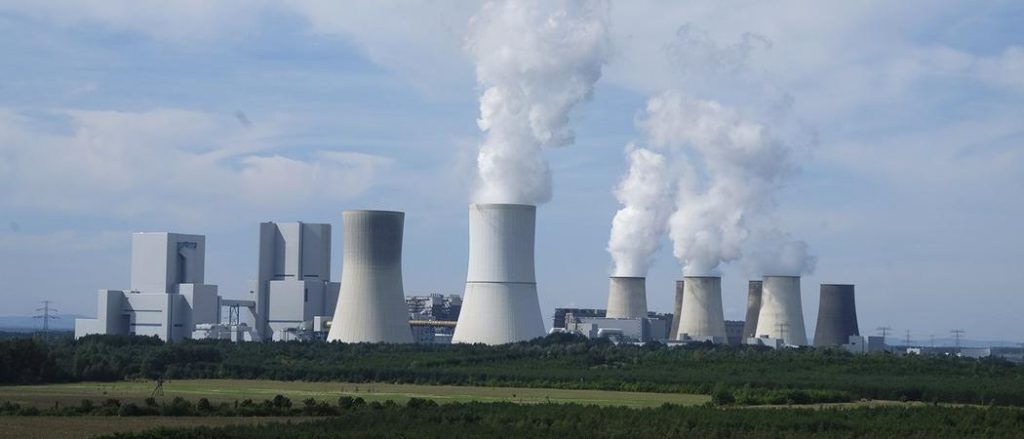Nuclear energy generates about 10% of the world’s electricity. There are over 439 functional reactors in 32 countries, including China, Dubai, France, Slovakia, Lithuania, and the USA, with the United States having over 100 reactors. While according to other sources, some countries solely rely on the energy generated from nuclear power.
The increasing use of energy sources worldwide leads to the depletion of some energy sources. Nuclear plants were created to generate nuclear energy to compensate for this high energy demand.
Nuclear energy is one of the most reliable carbon-free sources and caters to the world’s needs.
Unfortunately, there are concerns about the effects of atomic energy on the health of the populace and the environment.
In this article, we will discuss extensively the effects of nuclear energy on human health and the environment.
What is Nuclear Energy
Nuclear energy, or atomic energy, is a form of energy released from the nucleus through a reaction chain. Nuclear energy is energy present in the nucleus of an atom. Most of this energy is used to produce electricity but first must be released from the atom.
Nuclear energy can be produced by either nuclear fusion or nuclear fission. Most nuclear reactions occur in a nuclear reactor located in a nuclear power plant.
How Does A Reactor Work
The nuclear reactor works by a process called nuclear fission. This is where the nuclei of an atom are split into smaller nuclei releasing a large amount of energy. All of the reactions take place in a nuclear reactor located in a nuclear plant.
The fuel used is Uranium-235 which is loaded into fuel rods and loaded into fuel assemblies. The fuel assemblies are put into the nuclear reactor. The reactor contains nuclear moderators such as water which slows down neutrons to sustain the chain reaction.
When these neutrons collide with uranium-235, it splits uranium into smaller nuclei and releases other neutrons known as fission products.
This fission product from one uranium causes the other uranium atom to split, leading to a chain reaction. The fission of certain radioisotopes generates a lot of heat transferred to water.
Water acts as a coolant to absorb the heat. The coolant only becomes hot but not radioactive. In the steam generator, the coolant becomes high-pressure steam directed to a turbine.
In the turbine, the conversion from heat energy to mechanical energy takes place. The pressure from the steam is directed to a turbine strong enough to power a generator to produce electricity. Electricity generated by the turbine and generator is sent to the electrical grids and distributed to homes and industries.
The Sources of Nuclear Energy
There are three significant sources of nuclear energy, and they are:
1. Nuclear fission
Nuclear fission is the type of nuclear reaction by which the nucleus of an atom is split into two or more smaller nuclei. This process releases a large amount of nuclear energy.
Heavy elements such as plutonium, uranium, and thorium are more fissionable in nuclear fission.
2. Nuclear fusion
Nuclear fusion is a type of nuclear reaction between two or more lighter atomic nuclei, such as hydrogen (deuterium and tritium) or helium.
Their nuclei are fused to form heavy atomic nuclei. Nuclear fusion can also be described when two or more smaller nuclei are fused to create a large atom.
In nuclear fusion, energy is released due to the formation of heavy, highly powered atomic bonds in the nucleus. The nucleus of the atom formed is unstable and, as a result of this instability, exhibits a phenomenon called nuclear decay.
3. Nuclear Decay (Radioactive Decay)
Nuclear decay occurs when the parent nucleus of an unstable atomic element loses energy by radiation. This parent nucleus produces one or more daughter nuclei and spontaneously emits energy in the form of radiation. These daughter nuclei are more stable than the parents nuclei and have a lower mass.
Effects of Nuclear Energy on Human Health and The Environment
- Radioactive Spill From Waste
- Carbon dioxide Emission
- Thermal Pollution
- Nuclear Weapon Proliferation
- Nuclear Accident
- Radiation Exposure
- Environmental Effect
- Physiological Effect
1. Radioactive Spill From Waste
Radioactive waste materials generated from nuclear power plants, such as uranium mill tailing and spent reactor fuel, remain very radioactive for an extended period.
These radioactive wastes are temporarily stored in power plants before they are moved in large trucks to start where they will be buried.
If these radioactive wastes are not properly stored and disposed of, they could pose many environmental problems to aquatic and terrestrial habitats.
Direct or indirect contact with radioactive waste in humans can lead to genetic mutation, skin cancer, other forms of cancer, cataract, and tissue and organ damage.
2. Carbon dioxide Emission
Nuclear energy is described as one of the safest energy sources because it does not emit radiation.
This is true; however, certain activities emit carbon dioxide in nuclear power plants where nuclear energy is being generated. Activities such as the mining of uranium emit high levels of carbon dioxide.
The establishment of nuclear plants also generates a lot of carbon dioxide. Finally, radioactive waste is always left over when nuclear energy is generated. These wastes are active and continue to emit carbon dioxide transportation.
3. Thermal Pollution
During nuclear energy generation in nuclear plants, water acts as a coolant to absorb heat and cool the rods in the reactor vessel.
This cool water is released into the environment, especially seas and large water bodies. This water is warmer than the normal temperature and harmful to aquatic life, adapted to cooler temperatures.
4. Nuclear Weapon Proliferation
Process uranium pellets and other radioactive elements can be used to make nuclear weapons if they land in the wrong hands.
5. Nuclear Accident
In the production of nuclear energy from nuclear plants, accidents may occur. Although accidents in nuclear plants are infrequent, they do occur. Accidents from nuclear plants can cause long health damage to humans and disrupt the ecosystem.
Two notable nuclear accidents that had long-term effects on humans were the Chernobyl disaster in 1986 and the Fukushima Daiichi disaster in 2011, which led to the death and displacement of many individuals and properties.
Nuclear accidents have long-term catastrophic effects on humans, causing radiation-related diseases.
6. Radiation Exposure
Nuclear power plants utilize energy generated from certain radioactive isotopes to generate electricity. Through nuclear fission, other isotopes are produced. All these reactions and activities occur in a solid and enclosed containment to prevent the ionizing radiation from leaking.
Damage to these structures (reactors) causes the release of radioactive materials and ionizing radiation. At low doses, radioactive exposure leads to cancers such as thyroid cancer. Cancer occurs due to mutation of genes and damage to the DNA.
Radioactive exposure at low doses leads to cardiovascular diseases and cataracts. At high doses ionizing radiation causes death and sickness, such as organ and tissue failure.
Exposure of humans to iodine-131 from inhalation of particles, contaminated food, water and milk leads to the accumulation of these isotopes in the thyroid gland, which leads to thyroid cancer.
Also, exposure to cesium-134 and cesium-137 from contaminated soil materials and consuming contaminated food and water lead to organ and tissue damage. Children and teenagers are more sensitive to cancer-causing effects than adults.
7. Environmental effect
The environmental effects of mining and the production of Uranium lead to the destruction and pollution of the ecosystem.
Also, the water coolants used to cool rods are disposed of into water bodies. This disrupts aquatic ecosystems.
8. Physiological Effect
The physiological effects stem from establishing nuclear plants near homes and residential communities. This creates anxiety and unrest in the habitants.
This is due to concerns about nuclear energy accidents and safety.
Nuclear Energy Control
1. Creating safer, more efficient, and improved reactor designs. This is to reduce and control the risks of accidents.
2. The establishment and strict enforcement of safety regulations during the construction and decommissioning of nuclear power plants. All safety regulations must follow international standards.
3. There should be standby emergency measures and steps to respond to emergencies such as accidents and spillages. Also, it is important to involve the public and local authorities in training to prepare and be alert for any emergency.
4. Nuclear materials in the hands of the wrong person can lead to nuclear terrorism. Adequate security measures must be implemented to prevent unauthorized persons’ access to nuclear materials.
5. There should be regular inspection and maintenance of nuclear facilities to identify and be able to address issues in their early stages.
6. The establishment of robust containment systems to prevent the release or leakage of radioactive materials in the case of accidents.
Conclusion
It is important to acknowledge that the nuclear industry is doing a lot to ensure better waste management, security and standards.
They also focus on investing in research and development of advanced reactor designs and technologies. It is also crucial to strike a balance between meeting energy demands, reducing radioactive emissions, and safeguarding human health and the environment.
Finally, proper and regular public awareness and enlightenment to educate the public about the dangers and benefits of nuclear energy.
This is important as the public has a great role in risk reduction and certain decision-making. Check out the 10 Top Effects of Nuclear Waste On The Environment and the Effects of Pesticides on the Environment and Human Health.


